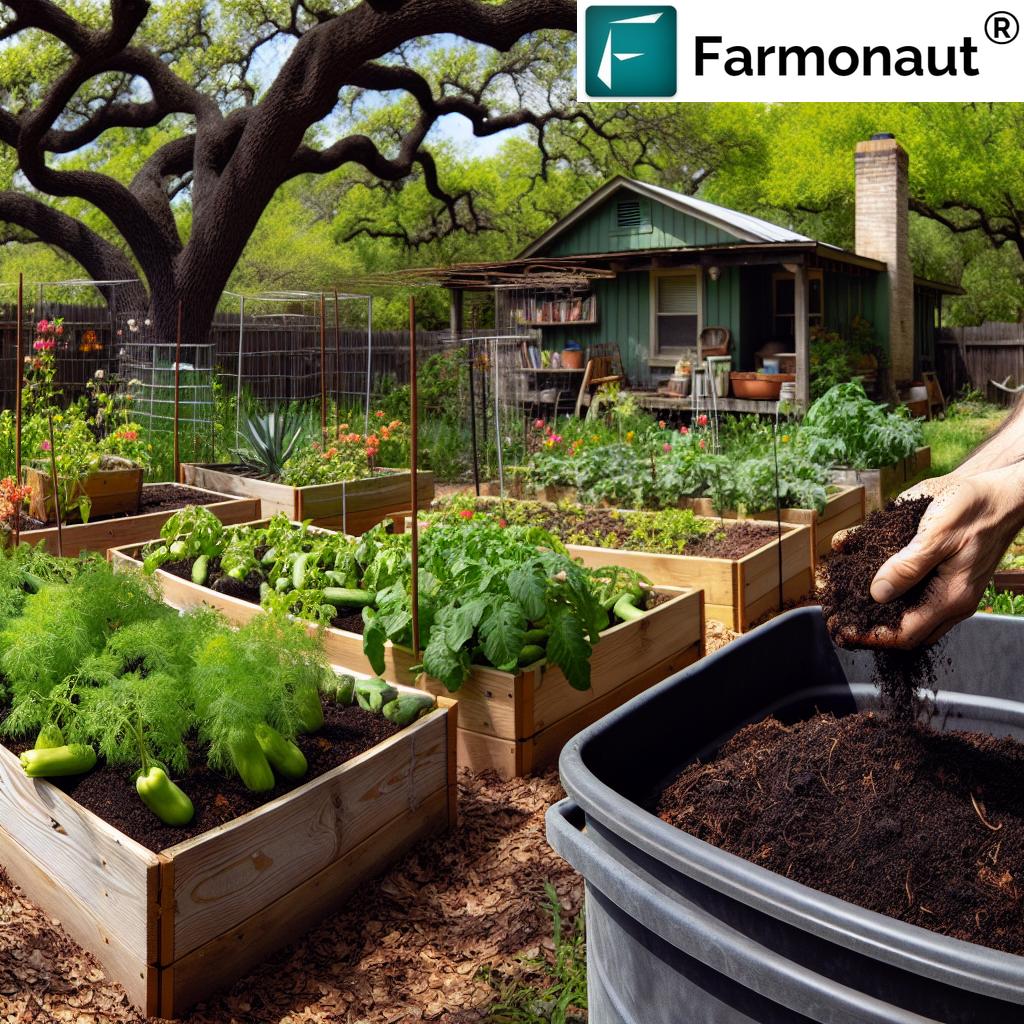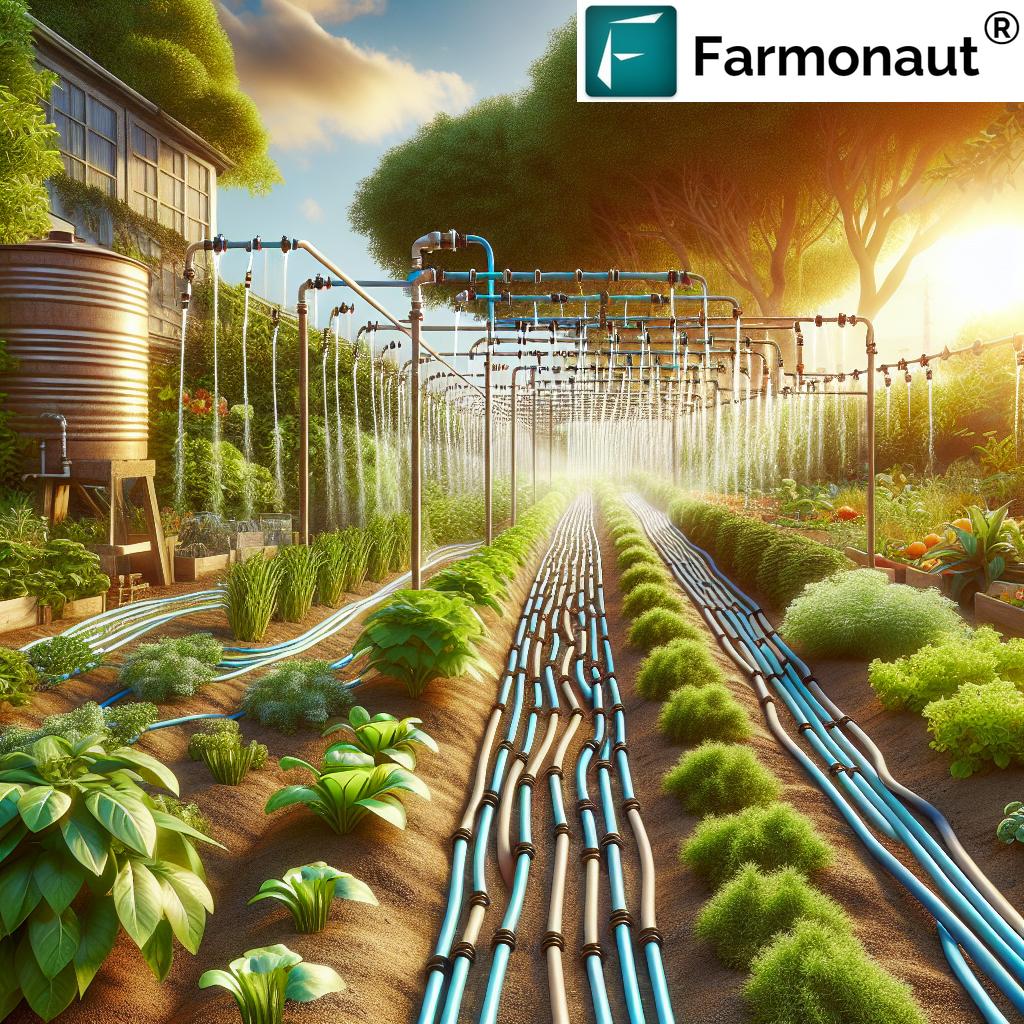Spring Gardening Success: Essential Tips for Thriving Plants in North Texas

“North Texas gardeners can increase plant health by up to 60% by investing in high-quality soil and proper watering techniques.”
As the vibrant colors of spring begin to unfold in North Texas, it’s time for us to embrace the joys of outdoor gardening and transform our backyards into thriving oases. Whether you’re a seasoned gardener or just starting your green journey, this comprehensive guide will provide you with essential spring gardening tips to ensure your plants flourish in the unique climate of North Texas. From choosing the best soil for gardening to mastering vegetable gardening basics, we’ll cover everything you need to know to make your garden a success this season.
The Importance of Quality Soil in North Texas Gardens
One of the most crucial aspects of successful gardening in North Texas is investing in high-quality soil. The region’s clay-heavy soil can present challenges for plant growth, making it essential to amend and improve the soil structure. Here’s why good soil matters:
- Nutrient retention: Quality soil holds essential nutrients that plants need to thrive
- Water management: Well-structured soil helps with proper drainage and moisture retention
- Root development: Loose, fertile soil allows roots to grow and spread easily
- Microbial activity: Healthy soil supports beneficial microorganisms that contribute to plant health
To improve your soil, consider adding organic matter such as compost, well-rotted manure, or leaf mold. These amendments will enhance soil structure, increase nutrient content, and promote healthy plant growth.
Vegetable Gardening for Beginners in North Texas
Spring is the perfect time to start a vegetable garden in North Texas. Here are some tips to help beginners get started:
- Choose the right location: Select a spot that receives at least 6-8 hours of direct sunlight daily
- Start small: Begin with a manageable garden size to avoid feeling overwhelmed
- Select suitable vegetables: Opt for plants that thrive in North Texas spring weather, such as tomatoes, peppers, cucumbers, and squash
- Prepare raised beds: Raised beds can help improve drainage and soil quality
- Use companion planting: Plant complementary vegetables together to maximize space and deter pests
Remember, successful vegetable gardening requires patience and consistent care. Don’t be discouraged if you face challenges – every gardener learns through experience!
Watering Plants in Hot Climates: North Texas Edition
Proper watering is crucial for plant health, especially in the hot and often dry climate of North Texas. Here are some watering tips to keep your plants thriving:
- Water deeply and less frequently to encourage deep root growth
- Water early in the morning to reduce evaporation and fungal growth
- Use mulch to retain soil moisture and regulate temperature
- Consider installing a drip irrigation system for efficient water use
- Monitor soil moisture levels regularly, especially during dry spells
For those interested in optimizing their watering practices, Farmonaut’s crop plantation and forest advisory services can provide valuable insights into soil moisture levels and irrigation needs based on satellite data and AI-driven analytics.
Composting at Home: Turning Kitchen Waste into Garden Gold
“Composting at home can reduce household waste by 30% while providing nutrient-rich fertilizer for North Texas gardens.”
Composting is an excellent way to reduce waste and create nutrient-rich soil for your garden. Here’s how to start composting at home:
- Choose a composting method: Decide between a compost bin, pile, or tumbler based on your space and needs
- Collect green and brown materials: Maintain a balance of nitrogen-rich “greens” (kitchen scraps, grass clippings) and carbon-rich “browns” (dry leaves, paper)
- Layer your materials: Alternate layers of greens and browns in your compost pile
- Keep it moist: Maintain moisture levels similar to a wrung-out sponge
- Turn regularly: Mix your compost every few weeks to aerate and speed up decomposition
Composting not only provides excellent nutrition for your plants but also contributes to sustainable gardening practices. It’s a win-win for both your garden and the environment!
Small Backyard Garden Ideas for North Texas Homes
Don’t let limited space deter you from creating a beautiful garden. Here are some small backyard garden ideas perfect for North Texas:
- Vertical gardening: Use trellises, hanging baskets, or wall-mounted planters to maximize space
- Container gardening: Grow herbs, vegetables, and flowers in pots on patios or balconies
- Raised bed gardens: Create efficient growing spaces with improved soil conditions
- Edible landscaping: Incorporate fruit trees and edible plants into your ornamental garden design
- Pollinator gardens: Attract beneficial insects with native flowering plants in a compact space
Remember, even a small garden can have a big impact on your home’s aesthetics and your personal well-being.

Seasonal Plant Care: Nurturing Your Garden Through North Texas Springs
As the seasons change in North Texas, your garden’s needs will evolve. Here’s a guide to seasonal plant care for spring:
- Early Spring (March):
- Prune dead or damaged branches from trees and shrubs
- Start seeds indoors for warm-season vegetables
- Apply pre-emergent herbicides to prevent weed growth
- Mid-Spring (April):
- Plant warm-season annuals and perennials
- Transplant seedlings to outdoor garden beds
- Begin regular fertilization schedules
- Late Spring (May):
- Mulch garden beds to retain moisture and suppress weeds
- Monitor for pest infestations and disease
- Adjust watering schedules as temperatures rise
For more detailed insights into seasonal plant care and crop health monitoring, consider exploring Farmonaut’s large-scale farm management solutions. While designed for larger operations, many of the principles can be applied to home gardens as well.
The Benefits of Outdoor Gardening for Mental and Physical Health
Gardening in North Texas isn’t just about growing plants; it’s a holistic activity that can improve both your physical and mental well-being. Here are some of the key benefits:
- Physical exercise: Gardening activities like digging, planting, and weeding provide low-impact exercise
- Stress reduction: Spending time in nature and caring for plants can lower stress levels and promote relaxation
- Improved nutrition: Growing your own fruits and vegetables encourages healthier eating habits
- Connection with nature: Gardening fosters a deeper appreciation for the natural world
- Sense of accomplishment: Watching your plants grow and thrive provides a sense of pride and achievement
By incorporating gardening into your routine, you’re not just cultivating plants – you’re nurturing your own health and happiness.
North Texas Spring Gardening Calendar
| Week | Average Temperature | Recommended Planting Activities | Watering Tips | Pest Control Measures |
|---|---|---|---|---|
| March Week 1 | 50-60°F | Plant cool-season vegetables (lettuce, spinach, peas) | Water deeply once a week | Monitor for aphids on new growth |
| March Week 3 | 55-65°F | Start warm-season seeds indoors (tomatoes, peppers) | Increase watering frequency as temperatures rise | Apply organic pest deterrents |
| April Week 1 | 60-70°F | Plant herb gardens and spring flowers | Water 2-3 times per week, depending on rainfall | Check for caterpillars on leafy vegetables |
| April Week 3 | 65-75°F | Transplant warm-season seedlings outdoors | Mulch to retain moisture | Install barriers to protect against rabbits and deer |
| May Week 1 | 70-80°F | Plant heat-loving vegetables (cucumbers, squash) | Water deeply in early morning | Monitor for signs of fungal diseases |
| May Week 3 | 75-85°F | Add summer-blooming annuals for color | Consider installing drip irrigation | Use companion planting to deter pests naturally |
Innovative Gardening Technologies for North Texas
While traditional gardening methods are time-tested and effective, modern technology can enhance our gardening experiences and outcomes. Here are some innovative tools and techniques that North Texas gardeners can leverage:
- Smart irrigation systems: These systems use weather data and soil moisture sensors to optimize watering schedules
- Plant identification apps: Instantly identify plants and get care instructions using your smartphone camera
- Vertical gardening systems: Maximize space with advanced vertical growing solutions
- Soil testing kits: Accurately measure soil pH and nutrient levels for optimal plant health
- Garden planning software: Design and plan your garden layout digitally before breaking ground
For those interested in cutting-edge agricultural technology, Farmonaut offers advanced solutions that can be adapted for home gardening. Their crop monitoring and advisory services use satellite imagery and AI to provide insights into plant health and growth patterns, which can be particularly useful for larger garden plots or small-scale urban farms.
Sustainable Gardening Practices for North Texas
As we become more aware of our environmental impact, incorporating sustainable gardening practices is crucial. Here are some eco-friendly techniques suitable for North Texas gardens:
- Water conservation: Use rain barrels to collect rainwater for garden use
- Native plant landscaping: Choose plants native to North Texas that require less water and maintenance
- Organic pest control: Opt for natural pest deterrents instead of chemical pesticides
- Composting: Reduce waste and create nutrient-rich soil amendments
- Pollinator-friendly gardens: Plant flowers that attract bees, butterflies, and other beneficial insects
By adopting these practices, we not only create healthier gardens but also contribute to the overall ecological balance of our region.
Frequently Asked Questions about Spring Gardening in North Texas
Q: When is the best time to start planting in North Texas?
A: For most spring vegetables and flowers, mid-March to early April is ideal, after the last frost date has passed.
Q: How often should I water my garden in North Texas spring?
A: It depends on rainfall and temperature, but generally, 1-2 inches of water per week is sufficient. Water deeply and less frequently to encourage deep root growth.
Q: What are some easy vegetables to grow for beginners in North Texas?
A: Tomatoes, peppers, cucumbers, and squash are relatively easy to grow and well-suited to the North Texas climate.
Q: How can I protect my plants from sudden temperature drops in spring?
A: Use row covers, cold frames, or even old bedsheets to cover plants when frost is expected. Remove covers during the day to allow sunlight and air circulation.
Q: What are some common pests to watch out for in North Texas gardens?
A: Common pests include aphids, caterpillars, snails, and spider mites. Regular monitoring and early intervention are key to managing pest issues.
Conclusion: Embracing the Joy of Spring Gardening in North Texas
As we’ve explored throughout this guide, spring gardening in North Texas offers a wealth of opportunities for both novice and experienced gardeners. By understanding the unique climate and soil conditions of our region, choosing the right plants, and implementing proper care techniques, we can create thriving gardens that bring beauty, sustenance, and joy to our homes.
Remember, gardening is a journey of continuous learning and adaptation. Don’t be afraid to experiment, ask for advice from local gardening communities, and most importantly, enjoy the process of nurturing life and connecting with nature. Whether you’re tending to a small herb garden on your balcony or managing a large backyard vegetable plot, the rewards of gardening extend far beyond the plants themselves.
As you embark on your spring gardening adventures in North Texas, we hope this guide serves as a valuable resource. Happy gardening, and may your spring be filled with the vibrant colors and sweet scents of a thriving garden!
Earn With Farmonaut: Affiliate Program
Earn 20% recurring commission with Farmonaut’s affiliate program by sharing your promo code and helping farmers save 10%. Onboard 10 Elite farmers monthly to earn a minimum of $148,000 annually—start now and grow your income!
















